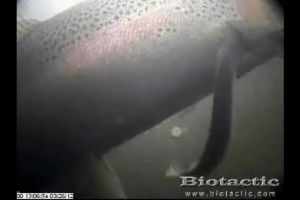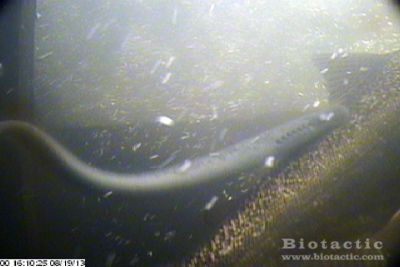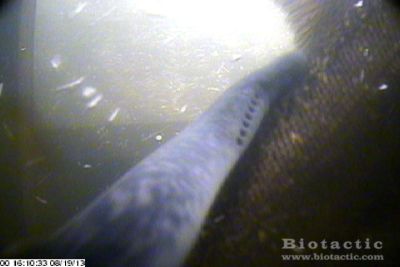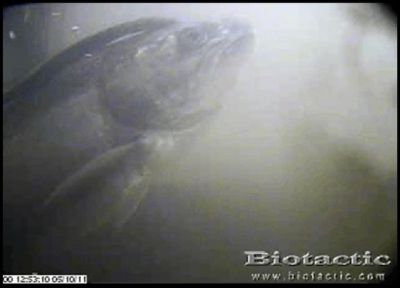A video-based fishway monitoring system was used for five years (2011-2015) to count migrating salmonids that inadvertently transported juvenile and adult Sea Lampreys (Petromyzon marinus) upstream through a nature-like fishway that maintains connectivity between Lake Huron and the Beaver River, Ontario. Rainbow Trout (Oncorhynchus mykiss) transported only juveniles from March to May with mean monthly water temperatures ranging from 6.8 – 15.6 oC. Chinook Salmon (Oncorhynchus tshawytscha) transported both juveniles and adult Sea Lampreys upstream from August (mean temp = 22.6 oC) to October (mean Temp = 9.0 oC). Transportation rates were low and ranged from 0.08 % for Rainbow Trout with juveniles and 0.27 % and 0.61 % for Chinook Salmon that transported both adult and juvenile Sea Lampreys, respectively. Rainbow Trout with juvenile lampreys and Rainbow Trout with scars took significantly longer to pass compared with Rainbow Trout with no lampreys attached or scars. Chinook Salmon with Sea Lampreys had reduced swimming performance and took significantly longer to pass upstream than fish that transported juvenile lampreys and fish with no lampreys or lamprey scars. This was likely related to bioenergetic consequences of parasitism coupled with increased drag coefficients and increased hydrodynamic resistance; however, this did not preclude successful fishway use.






